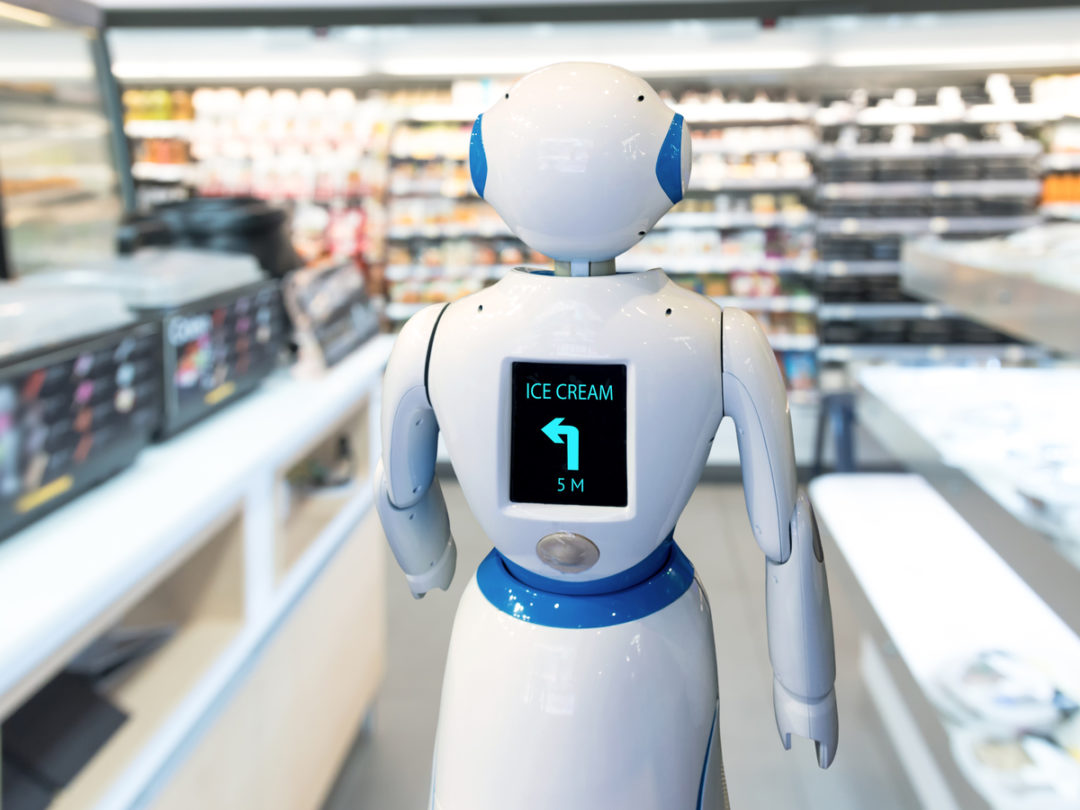
Visit Our Sponsors |
|
|
|
|
|
|
|
|
|
|
|
|
|
|
|
|
|
|
|
|
|
|
|
|
|
|
|
|
|
|
|
|
|
|
|
|
|
|

Automated fulfillment of e-commerce orders is coming to a grocery store near you — but it will be invisible to shoppers.
In recent years, many brick-and-mortar retail operations have sought to add fulfillment to their list of tasks. An in-store shopper might find herself competing with a store associate for an item on the shelf, the latter working to fill an online order.
For the retailer, the strategy makes better use of existing inventory, places stock closer to the end customer, and eliminates the need to ship e-commerce orders all the way from big distribution centers. Up to now, however, the practice of relying on humans to do the picking has proved too expensive for some stores to afford — not to mention its potential for interfering with the in-store customer experience.
Automation provides a possible solution. But do shoppers want to cope with robots zipping up and down the aisles, in search of product to fill online orders?
They won’t have to, if the automated picking operation is kept separate from the sales floor. That’s the idea behind new technology that carves out a dedicated part of the store for robots and e-commerce fulfillment.
Surprisingly, the innovation is taking place in the grocery industry, which has been relatively slow to embrace robots for order fulfillment. “It’s a tough industry to automate, with very low-value items,” explains Max Pedro, president and co-founder of Takeoff Technologies, developer of an in-store fulfillment system for grocery stores.
At the same time, he says, a reliance on manual picking in grocery aisles is akin to “stapling dollar bills to every bag.” Some form of robotics is essential to making the system work.
Automation got a big push in the grocery business with Amazon’s 2017 acquisition of Whole Foods. The deal brought the e-commerce giant’s technology prowess to a hidebound industry that had largely relied on people to manage orders for the multitude of items that make up a typical grocery store.
Takeoff is only two years old, having signed up six North American grocery clients in that brief time. It developed the software and user interface, coupling them with machinery acquired through an exclusive arrangement with Knapp AG. The first system went live late last year in Miami, Fla. at Sedano’s Supermarket. With 30 stores in Florida, it’s the nation’s largest Hispanic grocery chain.
Takeoff’s idea was to enable automated picking at a “hyper-local” level — meaning right at the store. But the operation carves out a separate space, of around 10,000 square feet, for its “micro fulfillment centers,” then deploys a combination of robots and human pickers to fill e-commerce orders within that area. The operation is invisible to the onsite shopper.
Takeoff then partners with a local delivery service for transport to the customer’s door, or loads the cars of shoppers who prefer to pick up their orders at the store (and avoid a delivery charge). Typical turnaround time is two hours from order to delivery, says chief executive officer and co-founder Jose Vicente Aguerrevere.
One might think that 10,000 square feet is a big chunk of floor space to dedicate to e-commerce, especially in cities where real estate prices are high. But Pedro says the worldwide grocery business has suffered a decline in productivity of square footage over the last 30 years, with stores losing sales to quick-service restaurants. These days, he suggests, a micro fulfillment center constitutes a more profitable use of limited store space.
Onsite fulfillment of e-commerce orders combines the advantage of proximity to customers with the cost-efficiency of automated picking, Aguerrevere says. Modern-day “goods-to-person” technology, employing both humans and robots, allows for the picking of around 850 items per hour, compared with between 60 and 80 items for a purely manual operation.
Not every item in the store can fit into the space set aside for automated picking, or is suited to the technology. A micro fulfillment center picks between 80 and 85 percent of the store’s merchandise, with an emphasis on the most commonly ordered items. It typically houses around 15,000 SKUs, which is sufficient for many grocery retailers, Pedro says. (Most Americans buy about 340 different items each year, he notes.) For retailers with larger selections, or odd-sized items and frozen foods, Takeoff can draw additional products straight from store shelves.
“If you want to offer super low costs no additional fees and very short time frames, keep it within four walls,” says Aguerrevere. “But for clients who want to offer an entire assortment, we allow for that.”
Other retailers to have signed up for Takeoff’s onsite fulfillment technology to date include Safeway and Ahold USA. The company’s current client base involves thousands of stores, notes Aguerrevere, and it expects to significantly increase implementations in the coming year.
Takeoff’s priority for the future is scaling up the system. But further automation could be in the cards. Eventually, orders might be carried to the customer’s door by robots or self-driving vehicles. Should that technology become feasible, “we’d be happy to add that as part of our suite of future services,” says Pedro.
RELATED CONTENT
RELATED VIDEOS
Timely, incisive articles delivered directly to your inbox.






